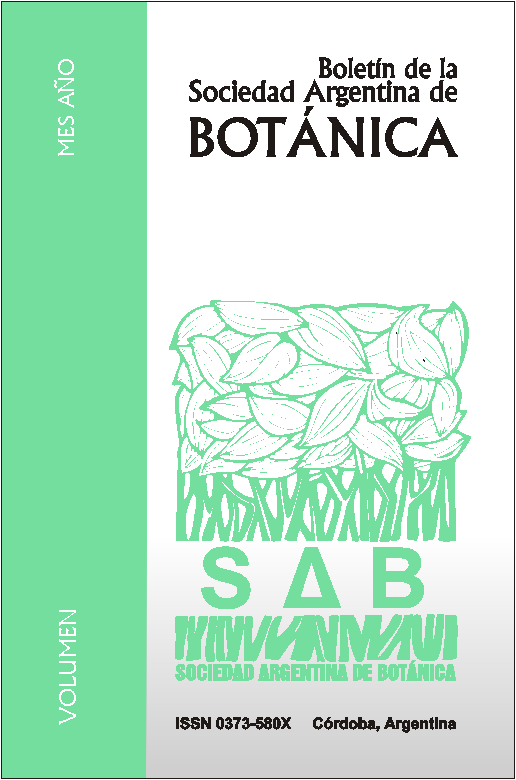Sowing density effect on photosynthetic activity of Chenopodium quinoa var. CICA (“quínoa”) in the Argentinean Northwest.
DOI:
https://doi.org/10.31055/1851.2372.v53.n1.19860Keywords:
Chenopodium, sowing density, photosynthesis, pigments.Abstract
Sowing density effect on photosynthetic activity of Chenopodium quinoa var. CICA (“quinoa”) in the Argentinean Northwest. Quinoa crop to obtain grain for human consumption has begun to spread in the region of Calchaquíes Valleys (Tucumán, Argentina) over 2,000 m asl. Because quinoa is a new alternative crop, must be carried out ecophysiological and agronomic studies to get its adequate management. In this study the effect of sowing density on the photosynthetic response against different photon flux densities (DFFF) was analyzed in order to calculate the maximum assimilation (A max ), light saturation point (PSL), light compensation point (PCL), photosynthetic efficiency (Ø CO2 ) and dark respiration (R n ) values. Data in relation to net photosynthetis assimilacion (A n ), stomatal conductance (g s ), leaf transpiration (T r ), internal CO 2 concentration (C i ), carboxilation capacity (A n /C i ) and intrinsec water use efficiency (EUA i ) are provided. In addition, photosynthetic pigment (chlorophylls and carotenoids) and protective one (absorbance at 305 nm) were measured. This study demonstrates that gas exchange parameters are directly correlated with morphology, foliar anatomy and grains yield and that the sowing density has a direct effect on them.Downloads
Published
Issue
Section
License
Provides immediate and free OPEN ACCESS to its content under the principle of making research freely available to the public, which fosters a greater exchange of global knowledge, allowing authors to maintain their copyright without restrictions.
Material published in Bol. Soc. Argent. Bot. is distributed under a Creative Commons Attribution-NonCommercial-ShareAlike 4.0 International license.





